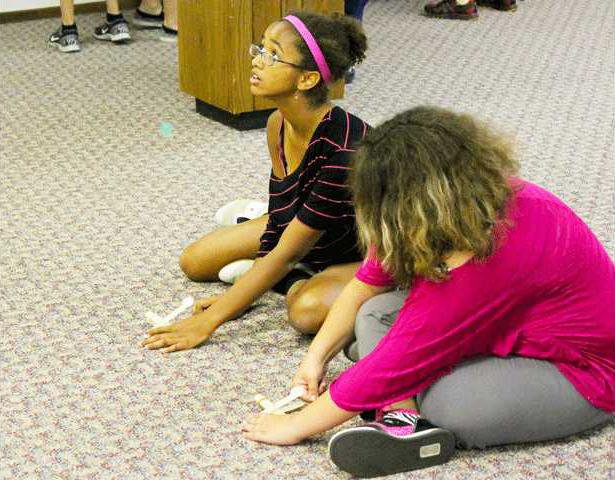At the Great Bend Public Library basement Tuesday afternoon, teens made miniature catapults out of wooden craft sticks and rubber bands. It was one of the “Spark a Reaction” weekly teen activities planned in conjunction with the library’s summer reading program led by librarian Jennifer King.
The spirit of experimentation was high as the teens tried out their engineering skills by increasing the tightness of their rubber bands or the thickness or placement of the arm at the fulcrum of their designs. The goal was to see how far a rubber ball could be launched, and if it could be directed accurately enough to knock down plastic bottles along a wall.
While the focus of the activity was scientific, catapults have an interesting history. They and the closely related trebuchet, have been used to launch projectiles great distances without the use of explosives since ancient times, leading to the overthrow of several leaders by invading warlords, historians have documented.
Projectiles could be rocks or stones, or flaming spears or darts, demolishing castle walls and fortifications. But sometimes the invaders wanted the castles to remain intact for strategic purposes. According to examiner.com and senioryears.com, biological warfare dates back to mediaeval years thanks to the power of the catapult. Soldiers would launch dead and diseased livestock over castle walls to spread disease as starving defenders in desperation ate the meat and spread the plague. One warlord even launched deadly venomous snakes in pots to win a siege.
Today, “punkin’ chunking” is a popular use of catapults and trebuchets. People compete to see who can toss a pumpkin the furthest, according to the website punkinchunking.com .
The event was sponsored by T & L Fireworks of Great Bend.
Catapults capture imaginations of teens





